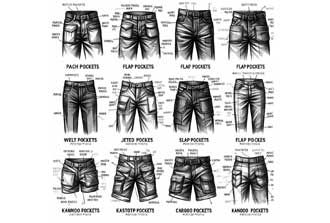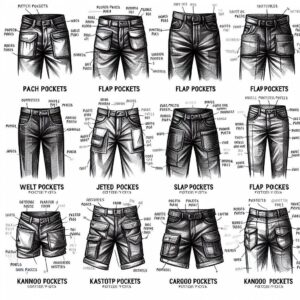
January 31, 2024


Welcome to Mk West Tailor in Milton Keynes, where you can find a diverse range of clothing options for both men and women.
From casual wear like jeans, jumpers, and t-shirts to more formal attire such as suits, blouses, and dresses, our store caters to a variety of styles and occasions.
In addition to our wide selection of clothes, we also offer accessories like bags, shoes, and jewellery to complete any outfit.
With a focus on trends and new arrivals, customers can find the latest in fashion at Mk West Tailor.
Whether you’re in need of holiday wear, work attire, or a special occasion outfit, our store has you covered. Come visit us for all your clothes repair, stock clothes, and sewing clothes needs.
if you any services just go to our contact us page and make connection with one of options.
Sewing various pocket models is one of the tasks that every skilled tailor needs to be familiar with.
Pockets come in various types and designs, serving different purposes in different types of clothing.
For instance, some pockets are suitable for trousers, while others are more suitable for coats, jackets, and shirts.
In this article, we delve into a more detailed examination of pocket types and discuss relevant sewing techniques.
Therefore, if you intend to gain general information about pockets, we recommend staying with us until the end of this short article.
Pockets exhibit a wide range of diversity in terms of size and functionality in clothing. Some are even sewn for the purpose of enhancing the aesthetics of the garment, without the intention of placing anything inside.
However, others, like trouser pockets, serve practical functions. For instance, you can use pockets to carry small items such as keys, mobile phones, pocket watches, credit cards, and similar belongings.
Pockets are typically sewn for more formal or social garments. This means that when sewing casual or home clothing, pockets are often omitted.
Our experience has shown that individuals ordering the tailoring of formal clothing attach significant importance to the presence of pockets and commonly request their inclusion in the garment.
Pockets come in various types, each serving different purposes for different types of clothing.
For example, when sewing a sportswear or casual set, there may not be a strong need to sew complicated double-welt pockets.
In formal garments, pockets are designed and sewn relative to the fabric thickness, functionality, and the garment’s overall design.
All these factors indicate that pocket sewing follows certain rules and principles, and one cannot sew pockets entirely based on personal preference.
In some models, we may not desire the pockets to be visibly pronounced. Therefore, it is necessary to use in-seam pockets. With ease and by using two oval-shaped fabric pieces, we can sew a flawless in-seam pocket for the customer.
The pockets used in vests are called vest pockets, single-welt pockets, or single-piped pockets. In these types of pockets, the corners and sides are sewn into the pocket, leaving a main rectangle or flap on the vest.
For sewing the pockets of coats and jackets, double-welt pockets are often used.
Double-welt pockets are examples designed to enhance the aesthetics and give a more formal appearance.
An interesting point about sewing pockets is that we can use contrast fabric in pocket construction.
Contrast fabric is the fabric and trim that is usually different from the main fabric.
To coordinate two pieces of clothing, you can also use similar contrast fabric in both pieces to establish a connection between them.
Contrast fabric is commonly associated with collar construction in sewing. However, there is no strict rule for it, and it largely depends on your preference and style.
These tips for sewing various types of pockets are the result of 25 years of experience in formalwear. Therefore, we recommend carefully reading and considering them.
1. The width of pockets and the welts or facings used for different types of pockets can vary.
The most beautiful welts are those crafted with finesse. Therefore, it’s better to sew them with a width of three centimeters. Although this might be a bit challenging, the noticeable impact on the beauty of your work will be significant.
2. It is essential to reinforce the underlay of the pocket area. This means strengthening the fabric with interfacing or other materials to bear the weight of the pocket and its contents.
3. For ironing pockets, it’s advisable to use glass wool that has been covered with a press cloth.
Alternatively, flame-resistant fabrics can also be used. Taking these measures is crucial to prevent pockets from scorching during ironing.
4. To iron pocket openings, you can use a piece of cardboard or hard plastic covers from notebooks. This technique ensures the creation of a flat and neat pocket, especially suitable for men’s shirts.
5. To determine pocket placement, you can move approximately 6 to 8 centimeters down from the shoulder towards the waistline, considering the overall height of individuals. The design of pocket openings can be either straightforward or angled.
6. For sewing pockets on trousers with 6 pockets, flat cuts are suitable for fabrics, and you can consider a narrow space for them. In these pockets, you can even use pile fabric for added texture.
7. Avoid using excessive seam allowances for cleaner pockets. These extra seam allowances not only spoil the appearance of the work but can also be a nuisance during ironing. Therefore, it’s better to trim off the excess after fixing the work.
mobile Number : +44 7902 168513
place Number : 01908 411350
Address : UK, Queensway, Bletchley 140, Mk22AA